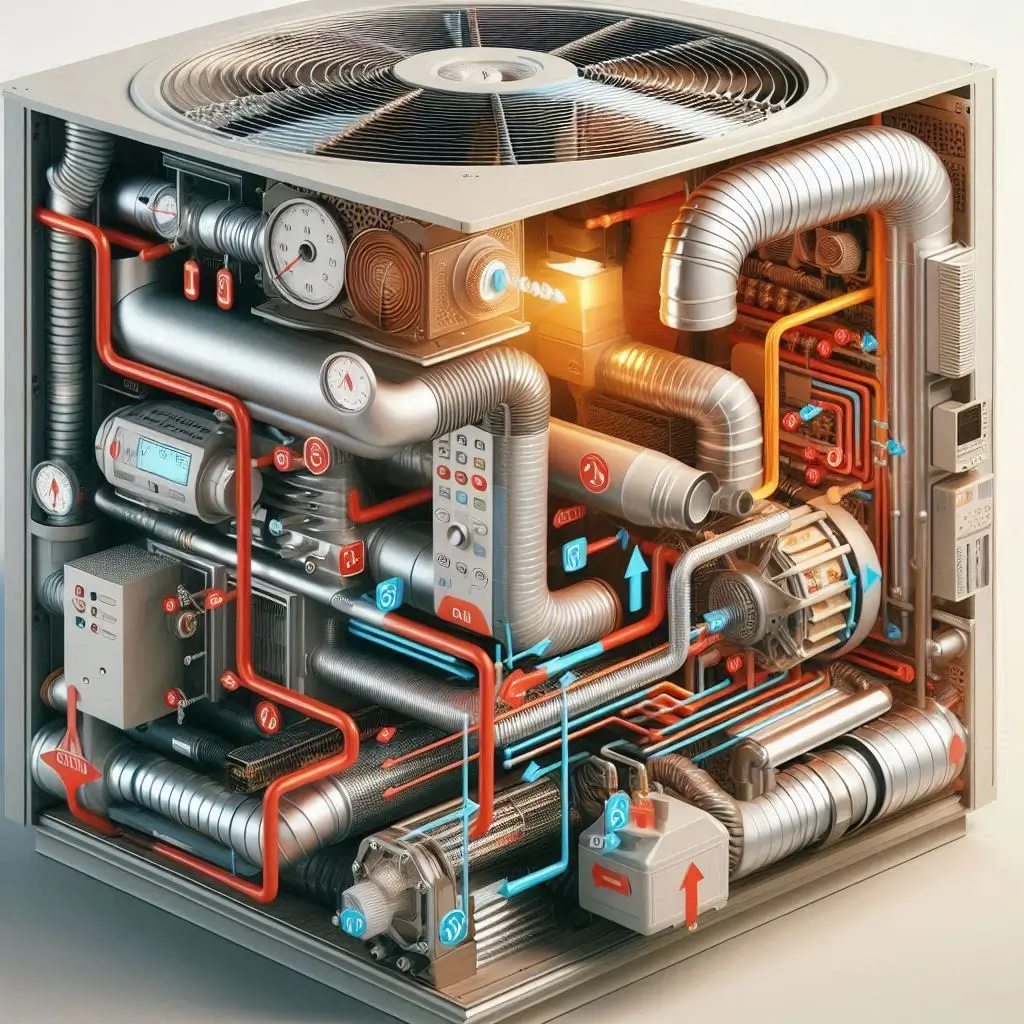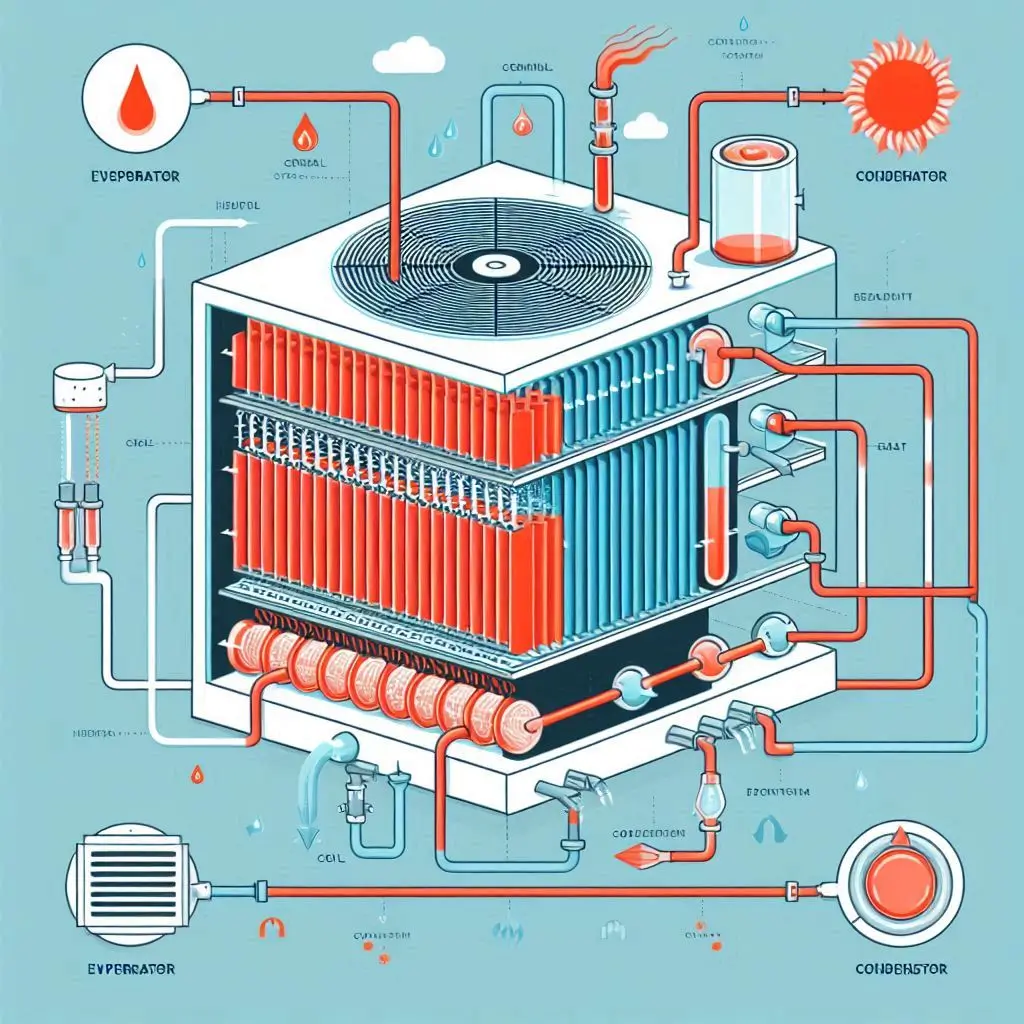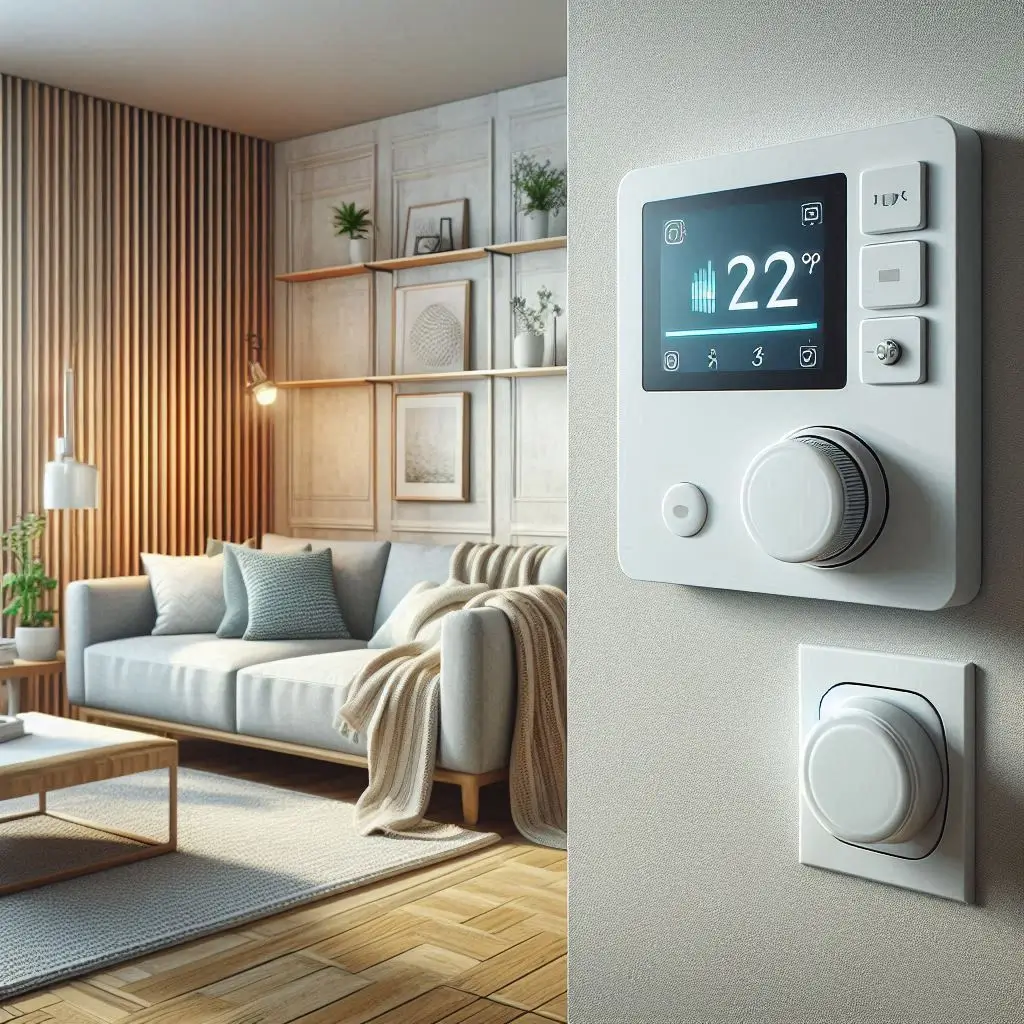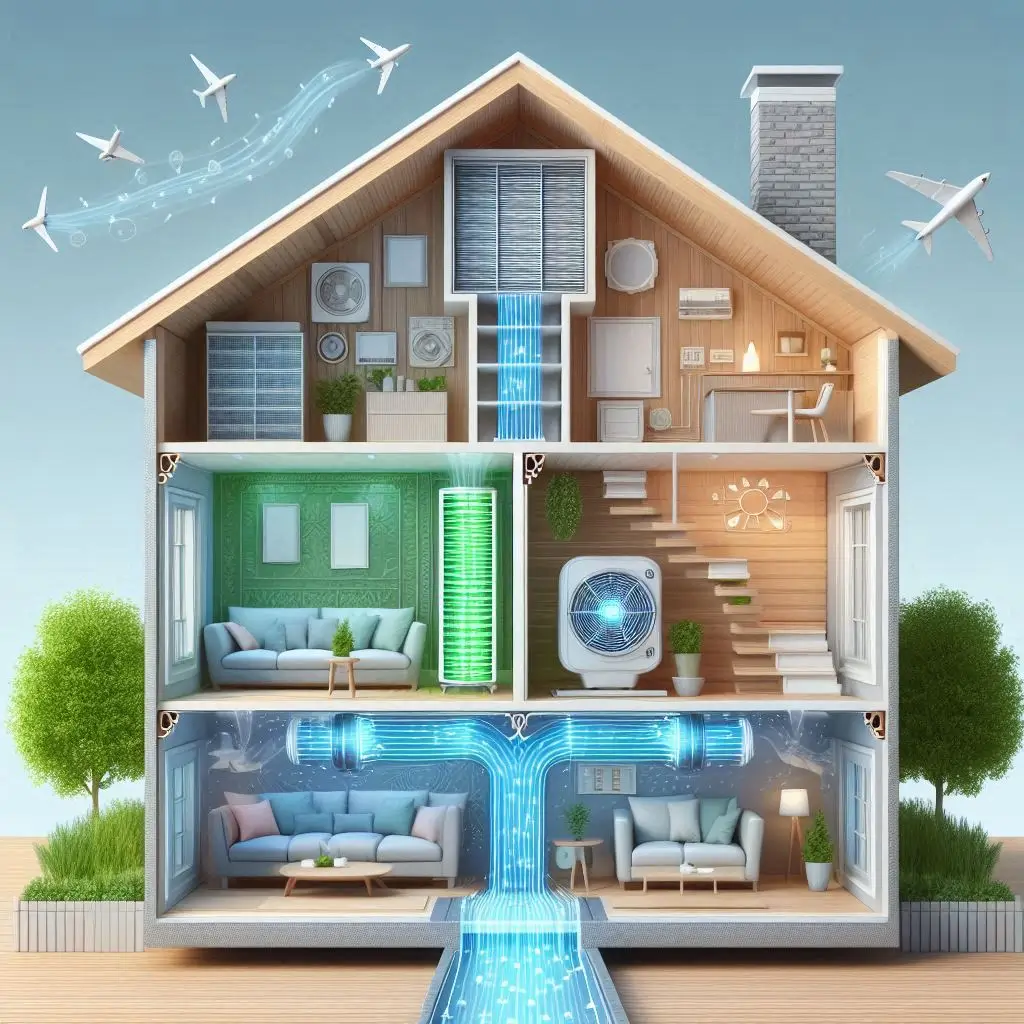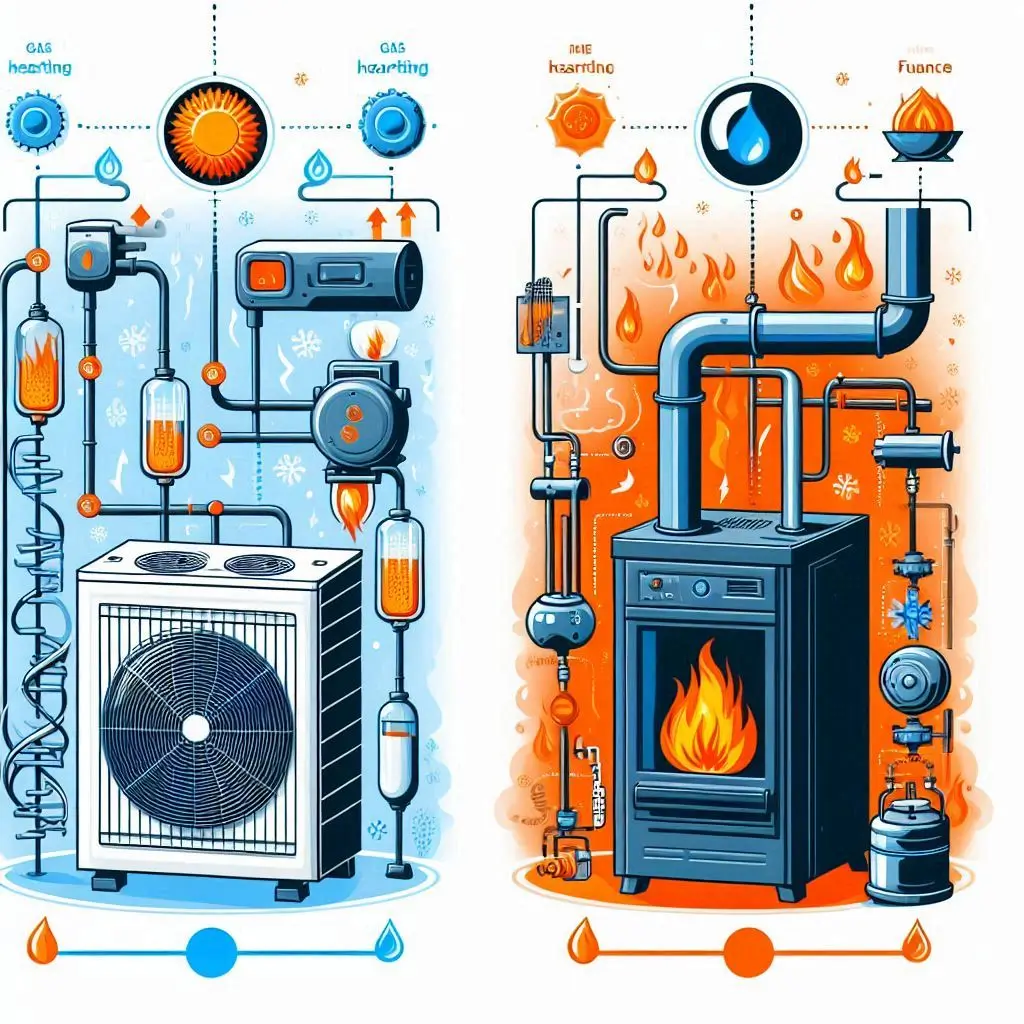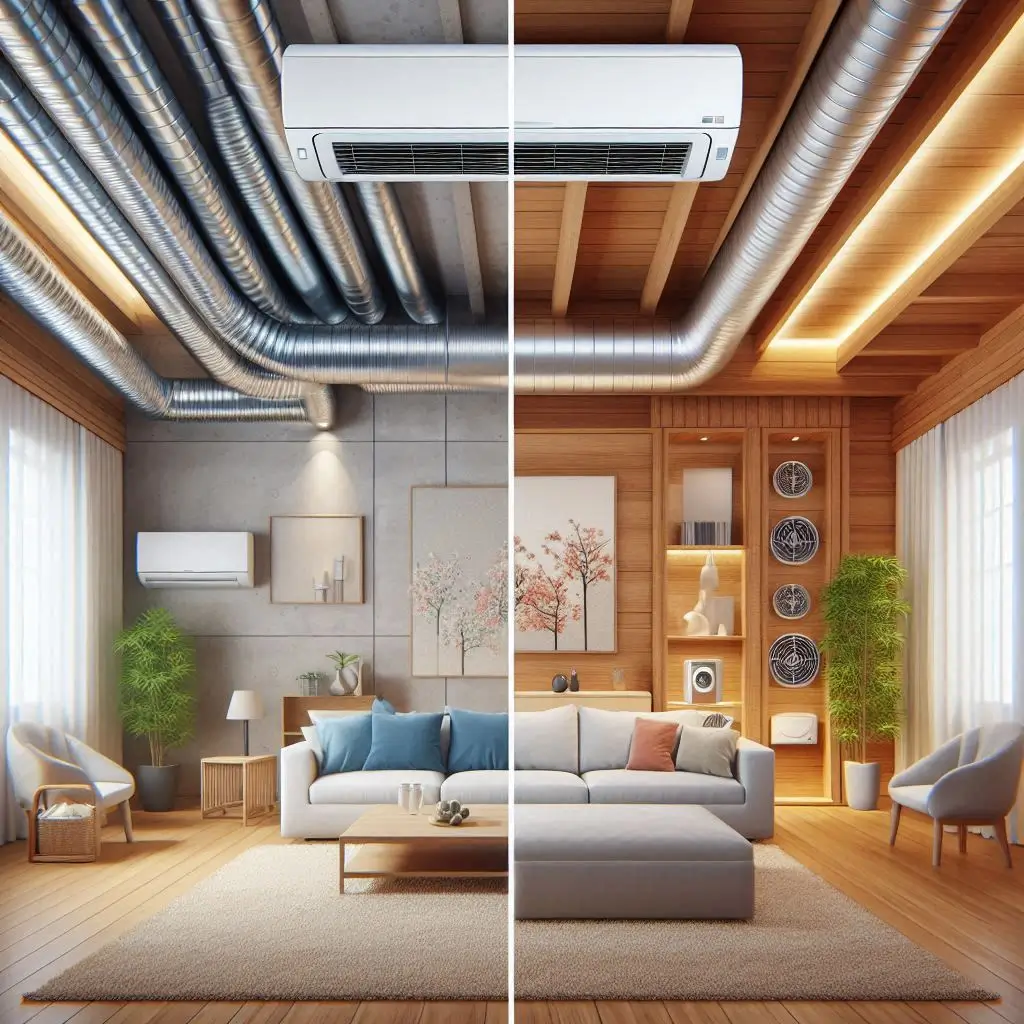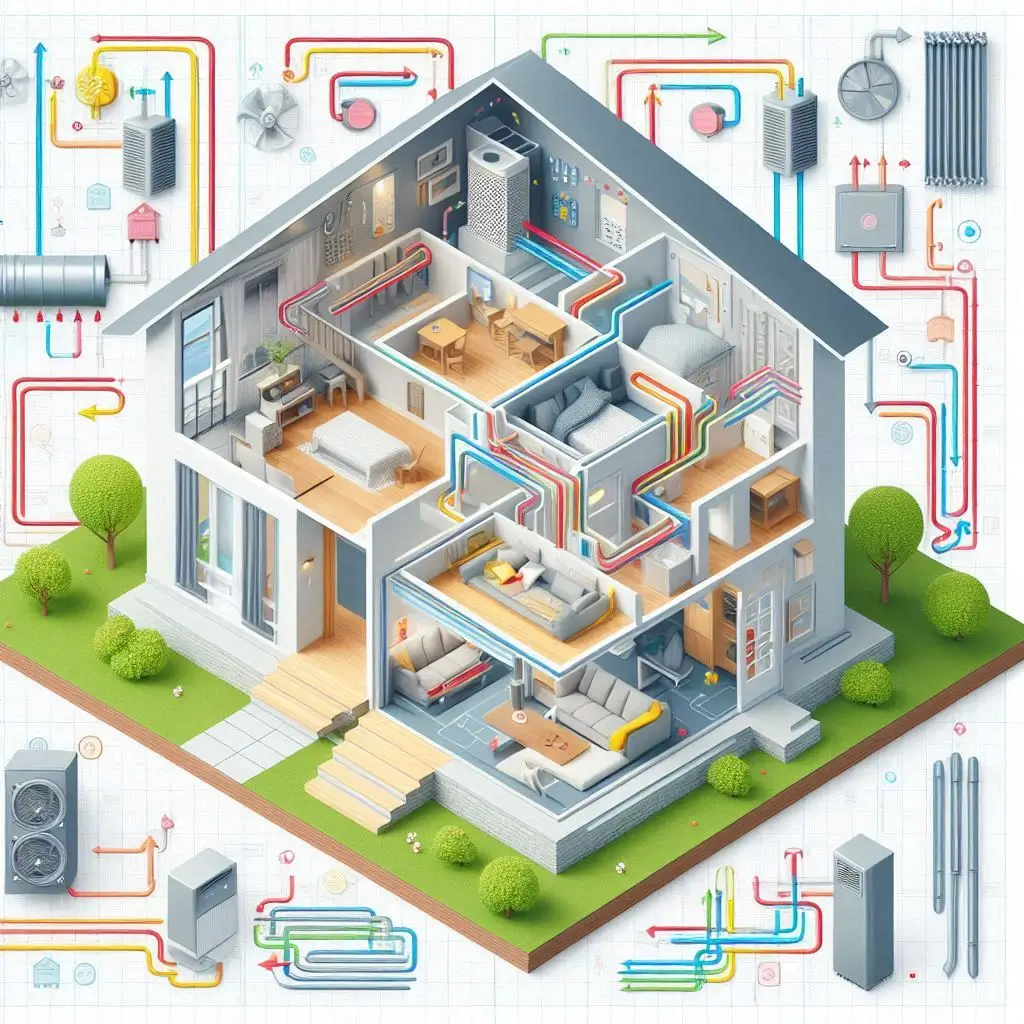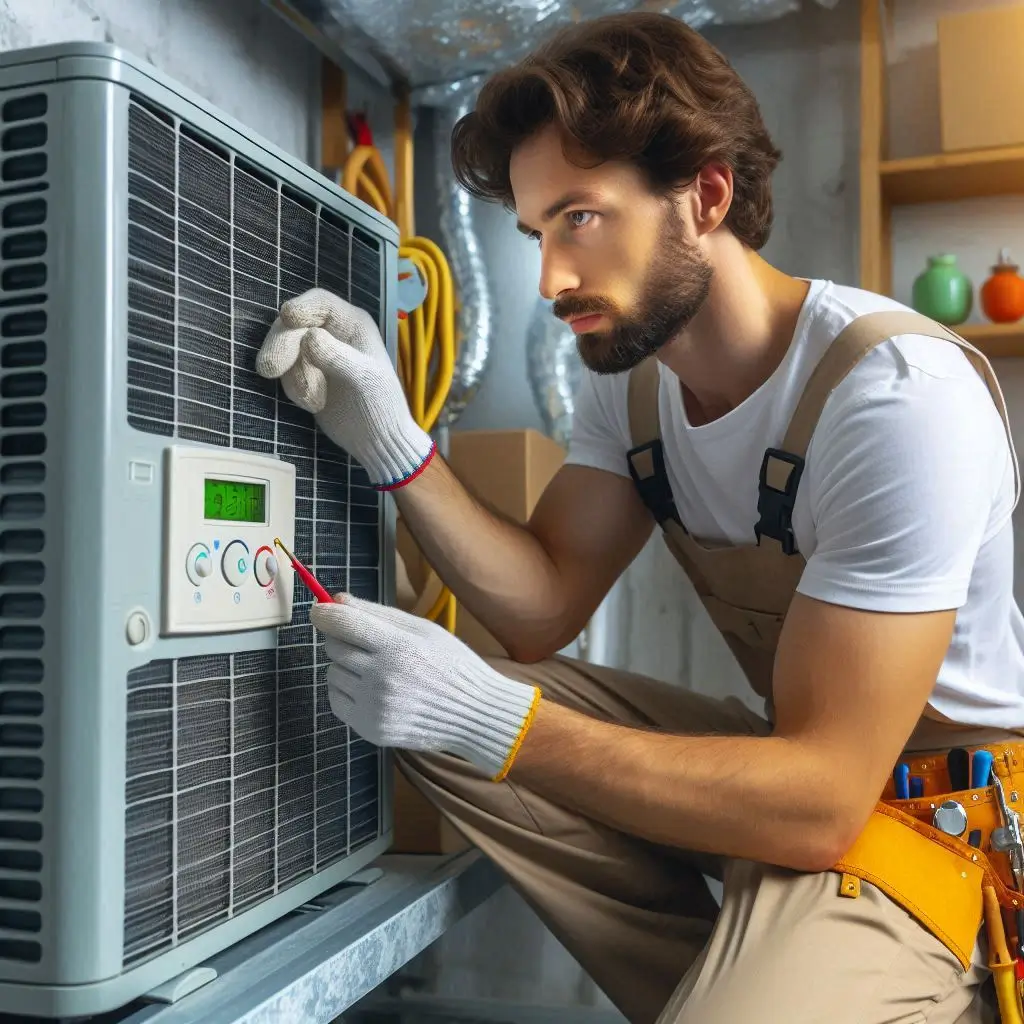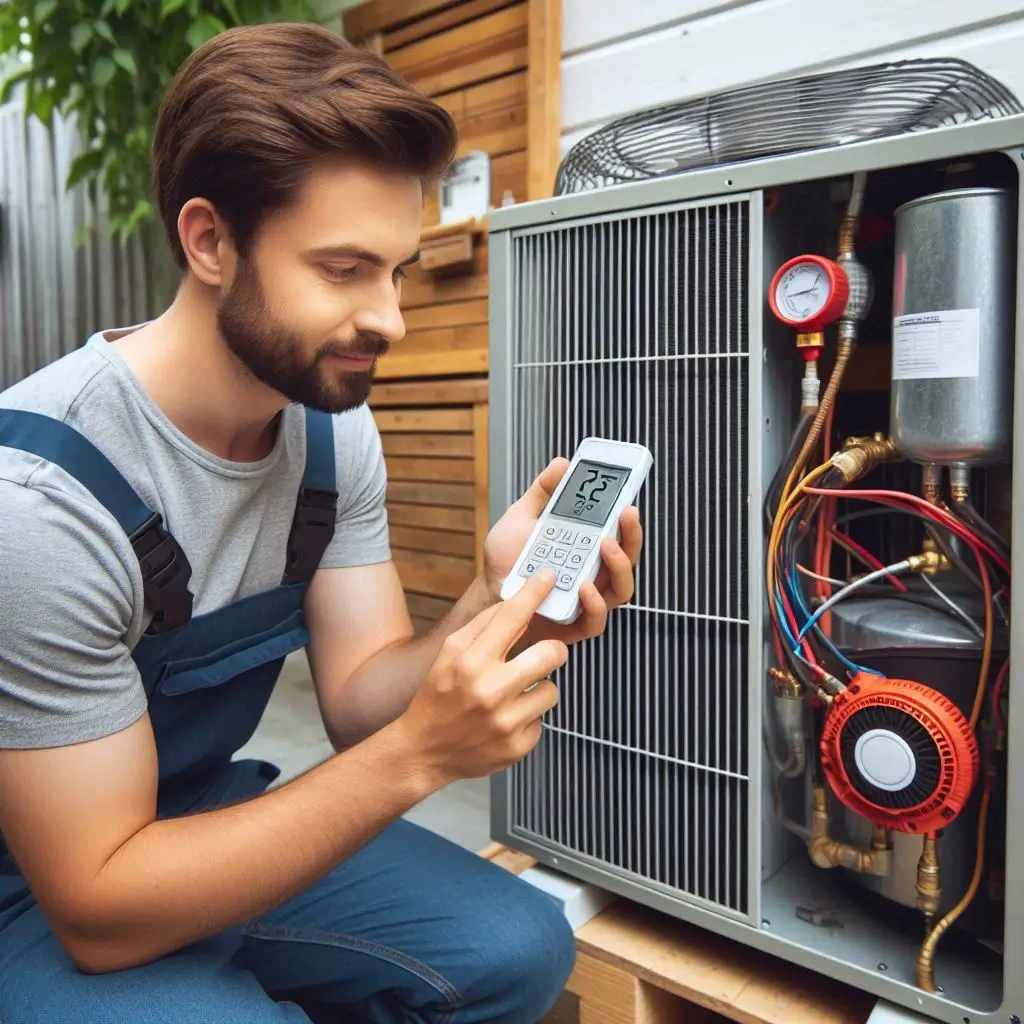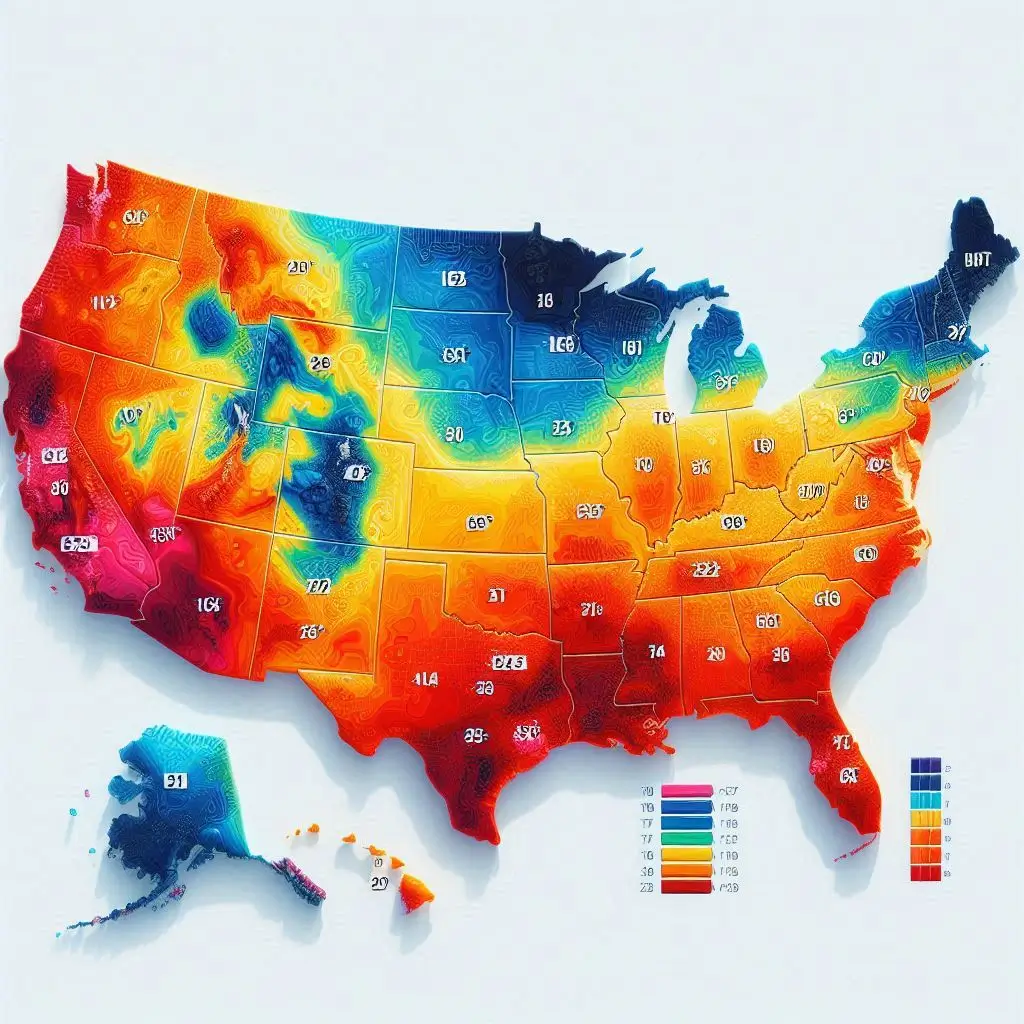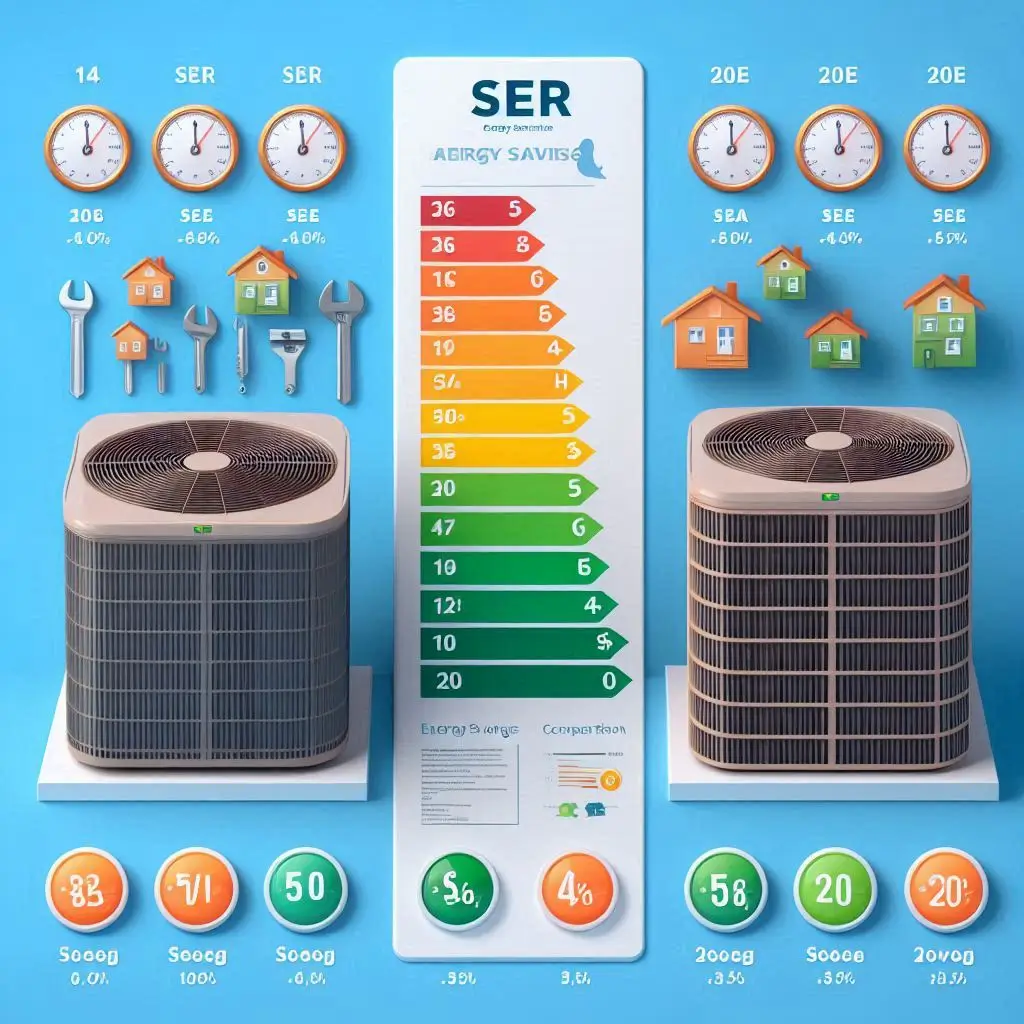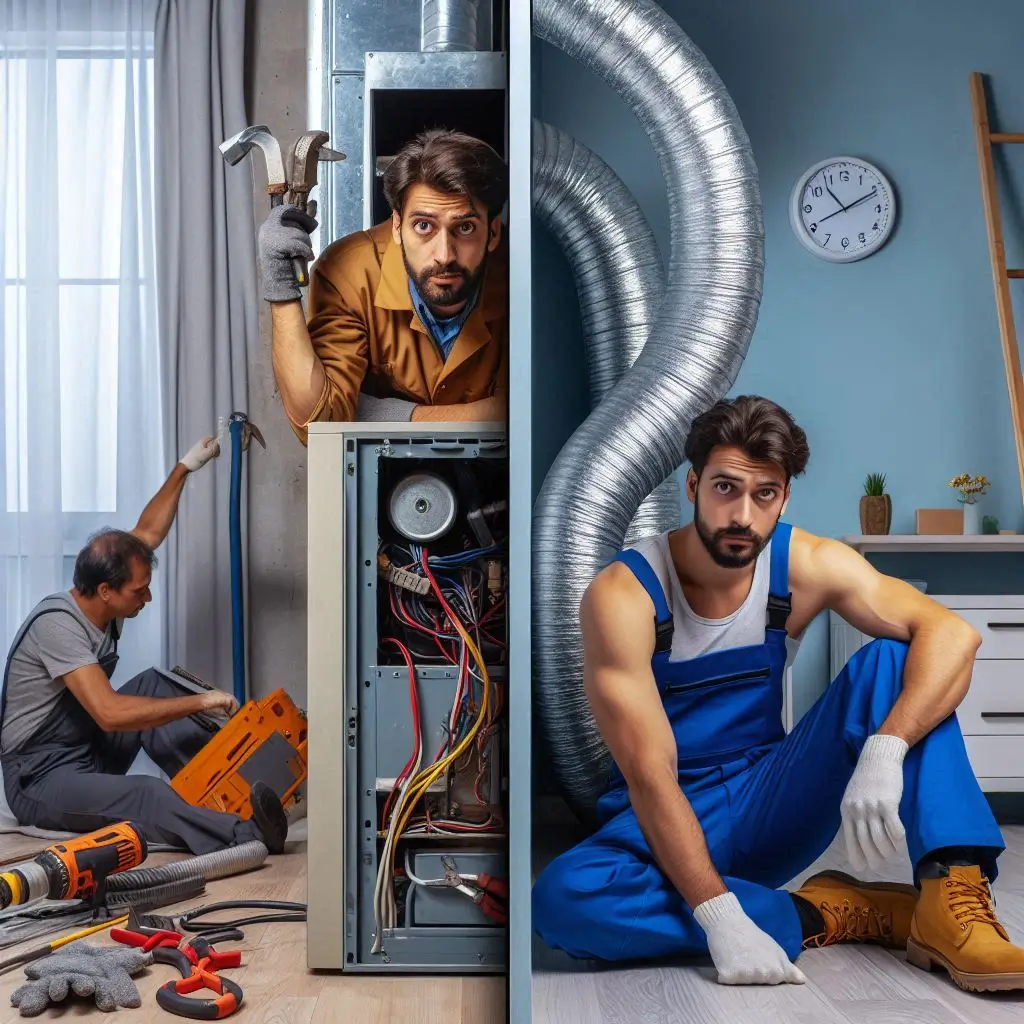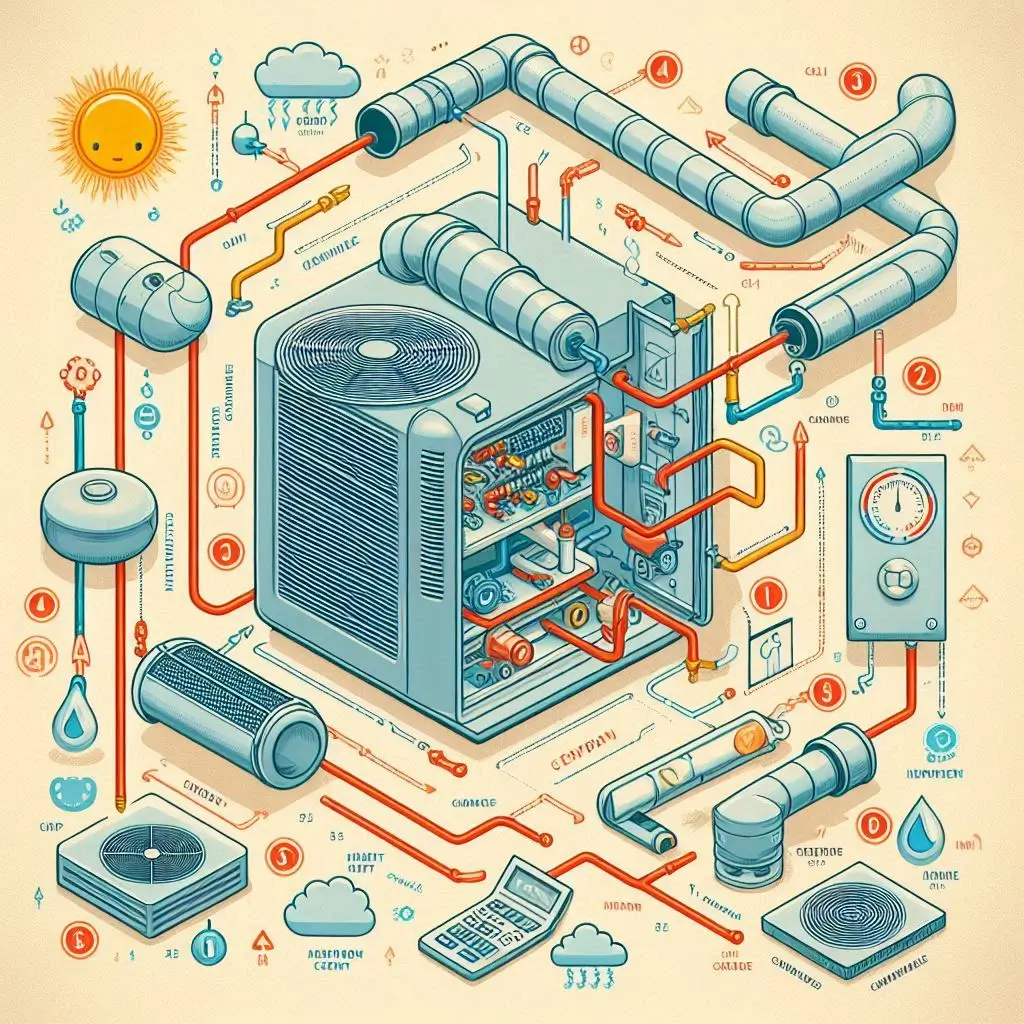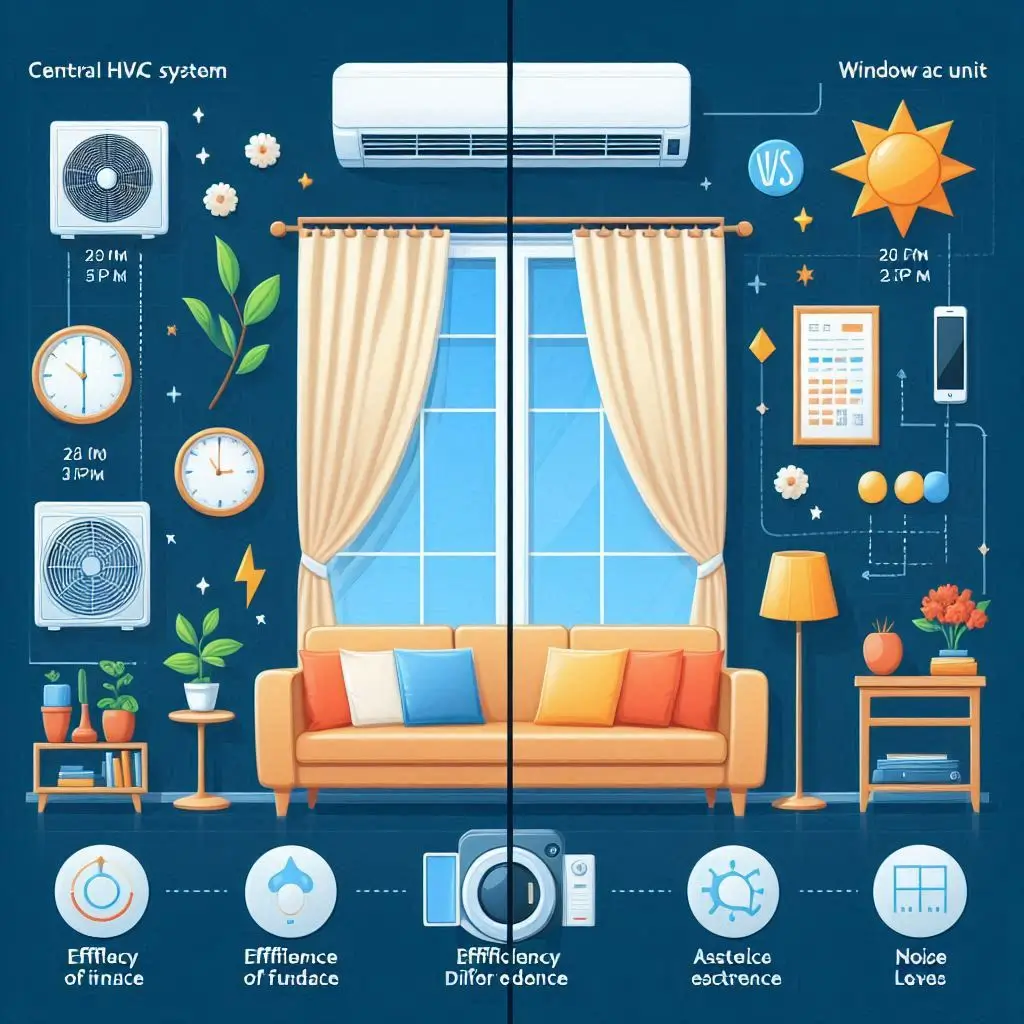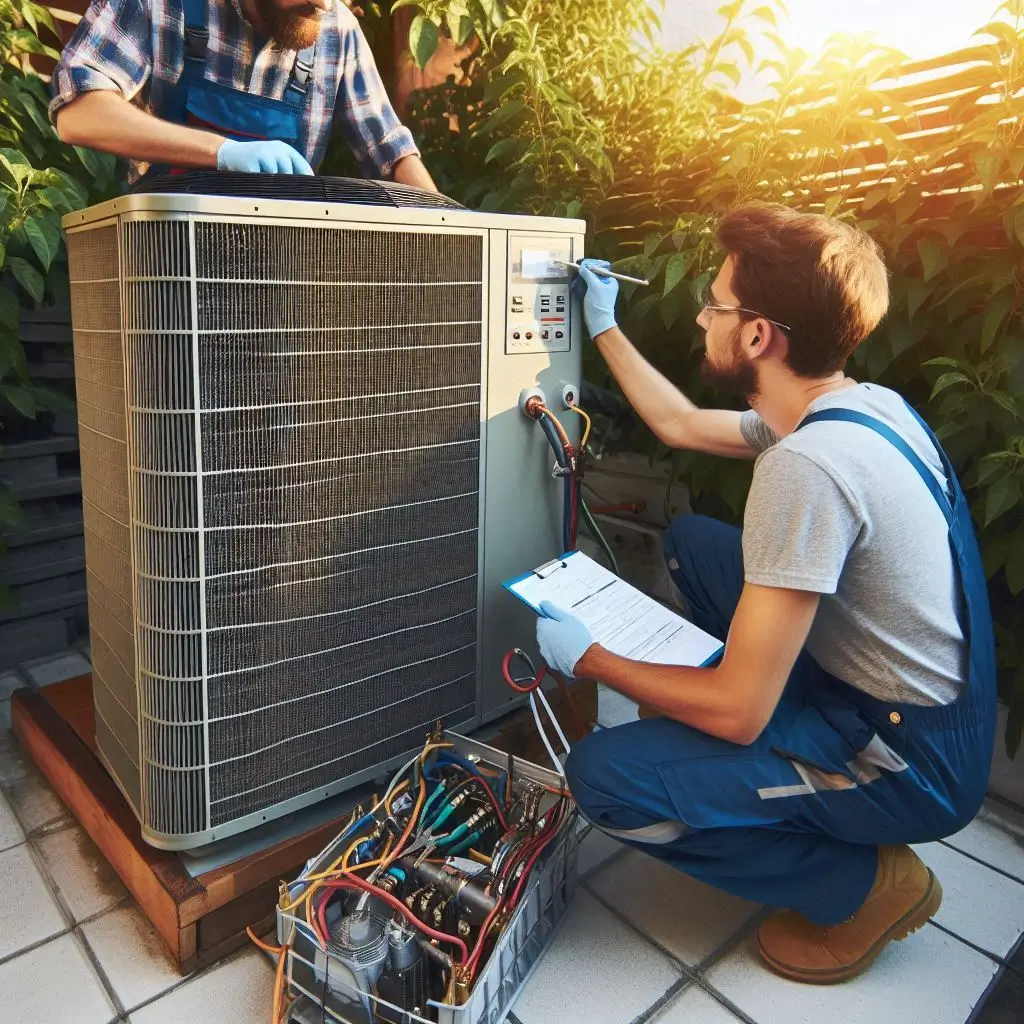What is Central Heating and Air?
Central heating and air systems are a comprehensive climate control solution designed to provide consistent temperature regulation throughout a home or commercial space. Unlike standalone air conditioning units or space heaters, central HVAC (Heating, Ventilation, and Air Conditioning) systems use a network of ducts and vents to evenly distribute heated or cooled air across multiple rooms.
By integrating heating and cooling functions into one system, homeowners benefit from enhanced comfort, improved energy efficiency, and better indoor air quality. Whether it’s the peak of summer or the coldest winter night, central heating and air ensures your home remains at an optimal temperature year-round.
Understanding Central HVAC Systems
A central HVAC system operates by using a centralized unit to generate and distribute air through a series of ducts. These systems typically consist of a furnace for heating and an air conditioner or heat pump for cooling, all controlled by a thermostat that regulates temperature based on user preferences.
There are two primary types of central HVAC systems:
- Split Systems: These have separate units for heating and cooling, typically with an outdoor compressor for cooling and an indoor furnace for heating.
- Packaged Systems: These combine heating and cooling components into a single outdoor unit, making them ideal for homes with limited indoor space.
Most central HVAC systems use ductwork to distribute air, but ductless mini-split systems are also an option for homes where installing ducts is not feasible.
Key Components of Central Heating and Cooling
A central heating and air system consists of several essential components that work together to regulate temperature efficiently. Understanding these components can help homeowners make informed decisions about maintenance, upgrades, and energy efficiency.
1. Thermostat
The thermostat acts as the control center of a central HVAC system. It allows homeowners to set the desired temperature and automatically adjusts heating or cooling based on real-time indoor conditions. Modern smart thermostats offer energy-saving features, learning user preferences and adjusting settings for maximum efficiency.
2. Furnace
The furnace is responsible for generating heat, usually by burning natural gas, propane, or using electricity. It contains a heat exchanger that warms air before distributing it through the duct system. Furnaces are rated by AFUE (Annual Fuel Utilization Efficiency), which determines how efficiently they convert fuel into heat.
3. Air Conditioner/Heat Pump
The air conditioner is designed to cool the indoor air by removing heat and moisture. It works by circulating refrigerant through a cycle of compression and expansion, transferring heat outside while pushing cool air indoors. Alternatively, a heat pump can provide both heating and cooling by reversing the refrigerant flow.
4. Ductwork and Vents
The duct system serves as the distribution network for conditioned air, ensuring even airflow throughout the home. Supply ducts deliver heated or cooled air, while return ducts pull stale air back to the system for reconditioning. Properly sealed and insulated ductwork is essential for maintaining efficiency and reducing energy loss.
5. Air Filter
The air filter plays a crucial role in improving indoor air quality by trapping dust, pollen, and other airborne contaminants. Regularly replacing or cleaning filters helps maintain optimal airflow and efficiency, preventing strain on the system.
6. Blower Fan
The blower fan is responsible for pushing conditioned air through the duct system. It operates at various speeds depending on demand, ensuring that the home reaches the desired temperature efficiently.
7. Refrigerant Lines
Refrigerant lines are used in air conditioners and heat pumps to transfer heat. These lines cycle refrigerant between the evaporator coil and condenser coil, allowing the system to absorb heat indoors and release it outside.
8. Evaporator and Condenser Coils
- The evaporator coil is located inside the home and absorbs heat from the indoor air as the refrigerant passes through it.
- The condenser coil is in the outdoor unit and releases absorbed heat into the outside air, cooling the refrigerant before it cycles back inside.
Benefits of Central Heating and Air Systems
A central heating and air system offers numerous advantages, making it one of the most efficient and convenient ways to maintain a comfortable indoor environment. Whether it’s ensuring consistent temperature control, lowering energy bills, or improving indoor air quality, central HVAC systems provide a comprehensive climate solution for residential and commercial properties.
In this guide, we will explore the top benefits of central heating and air systems and why they are a smart investment for homeowners.
Improved Indoor Comfort and Temperature Control
One of the primary advantages of a central heating and air system is its ability to provide even and consistent temperature regulation throughout the home. Unlike portable air conditioners or space heaters that only affect a single room, a central system distributes conditioned air evenly using ductwork.
How Central HVAC Enhances Comfort:
- Consistent Temperature Throughout the Home – No more hot or cold spots; every room maintains the same comfortable temperature.
- Zoning Capabilities – Some advanced systems allow for zoned heating and cooling, meaning different rooms can be set to different temperatures, enhancing personalized comfort.
- Smart Thermostat Integration – Modern central HVAC systems sync with smart thermostats, allowing homeowners to automate temperature control based on schedules and preferences.
- Quiet Operation – Unlike window AC units or standalone heaters, central HVAC systems operate with minimal noise, as the main components are located outside or in a separate mechanical room.
Energy Efficiency and Cost Savings
Central heating and air systems are designed to be highly energy-efficient, helping homeowners reduce utility bills while maintaining optimal comfort. Newer HVAC models come equipped with advanced energy-saving features that maximize efficiency without sacrificing performance.
Ways Central HVAC Saves Energy and Lowers Costs:
- High SEER and AFUE Ratings – Modern HVAC systems have high Seasonal Energy Efficiency Ratio (SEER) ratings for cooling and Annual Fuel Utilization Efficiency (AFUE) ratings for heating, ensuring less energy is wasted.
- Smart Thermostats and Automation – Smart thermostats optimize energy usage by learning homeowner habits, automatically adjusting the temperature for efficiency.
- Variable-Speed Blowers – Unlike traditional HVAC systems that run at full blast, variable-speed blowers adjust airflow based on demand, reducing energy consumption.
- Proper Insulation and Sealed Ducts – A well-maintained duct system prevents air leaks, ensuring the system runs efficiently without wasting energy.
- Government Incentives and Rebates – Many energy-efficient central HVAC systems qualify for tax credits and rebates, making them more affordable in the long run.
Enhanced Air Quality and Filtration
A central HVAC system does more than regulate temperature—it also improves indoor air quality by filtering out airborne contaminants and maintaining proper humidity levels. This is especially important for individuals with allergies, asthma, or respiratory issues.
How Central HVAC Improves Air Quality:
- Advanced Filtration Systems – Central HVAC systems are equipped with high-efficiency air filters (HEPA or MERV-rated) that trap dust, pollen, pet dander, and other airborne pollutants.
- Humidity Control – Integrated humidifiers and dehumidifiers maintain optimal humidity levels, preventing mold growth and dry air issues.
- UV Light Purification – Some systems use UV light technology to kill bacteria, viruses, and mold spores in the air.
- Consistent Air Circulation – Unlike portable units that recirculate the same air, central HVAC systems continuously cycle fresh air, preventing stale or musty indoor environments.
- Reduced Indoor Pollutants – With proper ventilation and air exchange, these systems remove odors, smoke, and chemical fumes from indoor spaces.
Types of Central Heating and Air Systems
Choosing the right central heating and air system is crucial for ensuring energy efficiency, comfort, and long-term savings. Various systems are available, each with unique features tailored to different climates, home layouts, and energy needs.
This guide will explore the primary types of central heating and air systems, comparing their advantages and ideal applications.
Split Systems vs. Packaged Systems
Central HVAC systems are generally categorized into split systems and packaged systems. The main difference lies in the placement of components and how they deliver heating and cooling.
Split HVAC Systems
A split system is the most common type of central HVAC system. It consists of separate indoor and outdoor units, connected via refrigerant lines.
Key Features:
- Outdoor Unit – Houses the compressor and condenser for cooling.
- Indoor Unit – Contains the evaporator coil and air handler for circulating conditioned air.
- Ideal for Homes with Existing Ductwork – Works seamlessly with pre-installed ducts to distribute air efficiently.
- Better Energy Efficiency – Since the components are separated, heat dissipation is improved, leading to lower energy consumption.
Packaged HVAC Systems
A packaged system combines all major components into a single outdoor unit, which is usually installed on a roof or next to the foundation.
Key Features:
- All-in-One Design – The compressor, condenser, evaporator coil, and air handler are housed in a single unit.
- Best for Homes Without Ductwork Space – Ideal for smaller homes or commercial buildings where indoor space is limited.
- Easier Installation and Maintenance – With all components in one location, maintenance is simpler and quicker.
Heat Pumps vs. Furnace-Based Systems
When it comes to heating options within central HVAC systems, homeowners typically choose between heat pumps and furnace-based systems. Both serve the purpose of warming indoor spaces, but they operate using different technologies and energy sources.
Heat Pump Systems
A heat pump is an all-in-one heating and cooling system that transfers heat rather than generating it. It works by absorbing heat from the outside air (or ground) and transferring it indoors during colder months. In the summer, it reverses the process to cool the home.
Key Benefits:
- Energy-Efficient – Uses electricity to move heat instead of generating it, leading to lower operating costs.
- Eco-Friendly – Reduces carbon footprint by avoiding fossil fuel combustion.
- Best for Mild Climates – Ideal for areas where winters are not extremely harsh, as efficiency drops in freezing temperatures.
- Works with Ducted and Ductless Systems – Offers flexibility in installation.
Furnace-Based Systems
A furnace system generates heat using either natural gas, propane, or electricity and distributes it through ductwork.
Key Benefits:
- Powerful Heating Performance – Works well in cold climates where a heat pump might struggle.
- Fast and Reliable – Provides instant, high-temperature heat for indoor comfort.
- Can Be Combined with Central AC – Many homes pair a furnace with an air conditioner for year-round climate control.
Ducted vs. Ductless Central Air Solutions
The choice between ducted and ductless systems depends on the home’s layout, efficiency goals, and installation preferences.
Ducted Central Air Systems
A ducted HVAC system uses a network of ducts to distribute conditioned air throughout the home. This is the most traditional and widely used system in the U.S.
Key Features:
- Even Air Distribution – Ensures consistent heating and cooling across all rooms.
- Can Be Combined with Heating Systems – Works well with furnaces, heat pumps, and central ACs.
- Requires Existing Ductwork – Best suited for homes that already have pre-installed ducts.
- Higher Energy Efficiency in Large Homes – More cost-effective for multi-room climate control.
Ductless Mini-Split Systems
A ductless system consists of an outdoor compressor unit connected to indoor air handlers, which individually regulate temperature in each zone.
Key Features:
- No Ductwork Required – Ideal for homes without existing ducts or for room additions.
- Zoned Climate Control – Each indoor unit operates independently, allowing for personalized temperature settings in different rooms.
- Higher Energy Efficiency – No duct losses, making it more efficient in smaller spaces.
- Quieter Operation – Indoor air handlers operate more silently than traditional ducted systems.
Installation and Maintenance of Central Heating and Air Systems
A central heating and air system is a long-term investment that requires proper installation and regular maintenance to ensure efficiency, durability, and cost-effectiveness. By understanding the key factors before installation, essential maintenance practices, and troubleshooting techniques, homeowners can keep their HVAC system running smoothly for years.
Factors to Consider Before Installation
Choosing the right central heating and air system involves more than just selecting a model. Several factors influence its efficiency, installation complexity, and long-term performance.
1. Home Size and Layout
The size of your home directly affects the HVAC system’s capacity requirements. A unit that’s too small will struggle to maintain the desired temperature, while an oversized system will short cycle, leading to higher energy bills and wear and tear.
Considerations:
- Calculate the BTU (British Thermal Unit) requirements based on square footage.
- Ensure even air distribution by designing an optimal ductwork layout.
- Multi-story homes may require zoned heating and cooling for better efficiency.
2. Energy Efficiency Ratings
Energy efficiency is key to lowering electricity costs and reducing environmental impact. Look for high-efficiency systems with:
- SEER (Seasonal Energy Efficiency Ratio) ratings of 16+ for air conditioning.
- AFUE (Annual Fuel Utilization Efficiency) of 90%+ for furnaces.
- ENERGY STAR-certified units for better savings.
3. Ductwork Inspection and Compatibility
If upgrading to a new HVAC system, it’s essential to inspect existing ductwork for:
- Leaks or blockages that reduce efficiency.
- Proper insulation to prevent heat loss.
- Correct sizing to match the airflow requirements of the new unit.
4. Climate and Heating Needs
Homes in colder regions may benefit from a furnace-based system, while milder climates can rely on an energy-efficient heat pump.
Routine Maintenance Tips for Longevity
Regular maintenance is essential to keep central heating and air systems in peak condition, prevent breakdowns, and maximize lifespan.
1. Change or Clean Air Filters Monthly
Clogged air filters reduce airflow, forcing the system to work harder, which increases energy consumption and shortens its lifespan.
Maintenance Steps:
- Replace disposable filters every 1-3 months.
- Clean reusable filters with mild detergent and let them dry completely.
- Upgrade to HEPA filters for better indoor air quality.
2. Inspect and Clean Ductwork
Dust and debris buildup in ducts can lower efficiency and affect air quality.
DIY Duct Cleaning Tips:
- Remove vent covers and vacuum visible dust.
- Use a long brush attachment to reach deeper areas.
- Schedule professional duct cleaning every 3-5 years.
3. Check Thermostat Calibration
A faulty thermostat can cause temperature inconsistencies and unnecessary energy use.
How to Check:
- Set the thermostat to a specific temperature and compare it to an external thermometer.
- If inaccurate, recalibrate or upgrade to a programmable or smart thermostat.
4. Schedule Professional HVAC Inspections
Annual tune-ups by a certified HVAC technician can prevent costly breakdowns by:
- Checking refrigerant levels in air conditioners.
- Inspecting gas furnace burners for proper function.
- Lubricating moving parts to reduce wear and tear.
Common Issues and Troubleshooting Guide
Even with regular maintenance, HVAC systems can develop issues that impact performance. Identifying common problems early can prevent expensive repairs.
1. Uneven Heating or Cooling
Possible Causes:
- Blocked or dirty air filters restricting airflow.
- Leaky ductwork causing air loss.
- Improper thermostat settings leading to inefficient performance.
Solution:
- Replace air filters and check for obstructions.
- Inspect and seal duct leaks.
- Adjust thermostat settings to ensure balanced heating/cooling.
2. System Not Turning On
Possible Causes:
- Tripped circuit breaker cutting power to the unit.
- Faulty thermostat wiring or dead batteries.
- Blown fuse in the control board.
Solution:
- Reset the breaker panel and replace blown fuses.
- Check thermostat batteries and reprogram settings.
- Call an HVAC technician if electrical issues persist.
3. Unusual Noises During Operation
Possible Causes:
- Rattling sounds – Loose screws or ductwork vibrations.
- Squealing noises – Worn-out motor belts.
- Buzzing sounds – Electrical problems in the compressor.
Solution:
- Tighten screws and secure duct connections.
- Replace worn-out motor belts.
- Contact an HVAC expert for electrical concerns.
4. Short Cycling (Frequent ON/OFF Cycles)
Possible Causes:
- Oversized unit leading to rapid temperature changes.
- Clogged air filter restricting airflow.
- Low refrigerant levels affecting cooling performance.
Solution:
- Ensure the unit is correctly sized for the home.
- Replace air filters regularly.
- Recharge refrigerant under professional supervision.
Choosing the Right Central Heating and Air System for Your Home
Selecting the right central heating and air system is crucial for maintaining optimal indoor comfort, energy efficiency, and long-term cost savings. With various options available, homeowners must evaluate their specific heating and cooling needs, consider efficiency ratings, and decide between professional installation or a DIY approach.
Evaluating Your Home’s Heating and Cooling Needs
Before investing in a central heating and air system, it’s essential to assess your home’s unique requirements. The right system should be properly sized, compatible with your home layout, and suitable for the local climate.
1. Calculating the Required HVAC Capacity
An undersized unit will struggle to maintain temperature, leading to excessive wear and high energy bills, while an oversized system will cycle too frequently, causing inefficiency and inconsistent temperatures.
Key Factors to Consider:
- Square Footage: Larger homes require higher BTU (British Thermal Units) ratings.
- Insulation Levels: Well-insulated homes retain heat better, reducing energy needs.
- Sunlight Exposure: Homes with large windows may require additional cooling power.
- Number of Occupants: More people generate additional heat, affecting cooling requirements.
How to Calculate:
- Use the Manual J Calculation, an industry-standard method that factors in home size, insulation, and climate conditions.
- A rough estimate is 20 BTU per square foot, but professional calculations provide more accuracy.
2. Climate Considerations
Your geographic location significantly influences your HVAC choice.
- Cold Climates: Homes in northern states may benefit from furnace-based heating or dual-fuel systems.
- Hot and Humid Regions: High-SEER air conditioners or heat pumps are ideal for maintaining cool temperatures efficiently.
- Moderate Climates: Heat pumps provide both heating and cooling, making them an energy-efficient choice.
Energy Ratings and Efficiency Standards
Choosing an energy-efficient central heating and air system helps homeowners save on utility bills while reducing environmental impact.
1. Understanding SEER, EER, and HSPF Ratings
- SEER (Seasonal Energy Efficiency Ratio): Measures the efficiency of air conditioners and heat pumps. A SEER rating of 16+ is recommended for optimal energy savings.
- EER (Energy Efficiency Ratio): Indicates how efficiently a cooling system operates under specific conditions.
- HSPF (Heating Seasonal Performance Factor): Measures the efficiency of heat pumps during heating mode. A rating of 8.5+ is ideal for cost-effectiveness.
2. ENERGY STAR Certification
Look for ENERGY STAR-certified HVAC systems, which meet strict efficiency guidelines set by the U.S. Environmental Protection Agency (EPA).
3. Smart Thermostat Compatibility
Investing in a smart thermostat improves efficiency by:
✔ Learning user preferences and automatically adjusting temperatures.
✔ Reducing energy consumption by optimizing heating and cooling cycles.
✔ Providing remote control features through smartphone apps.
4. Variable-Speed vs. Single-Stage Systems
- Single-Stage HVAC Systems: Operate at full capacity or turn off completely, leading to energy waste.
- Variable-Speed Systems: Adjust airflow based on real-time heating and cooling demands, improving efficiency and comfort.
Professional Installation vs. DIY Setup
Deciding whether to hire a professional HVAC contractor or attempt a DIY installation depends on factors like system complexity, local building codes, and technical expertise.
1. Benefits of Professional Installation
A licensed HVAC contractor ensures:
- Correct sizing and load calculations to match your home’s heating and cooling needs.
- Proper ductwork installation to prevent airflow restrictions.
- Safe electrical connections to avoid fire hazards and inefficiencies.
- Compliance with local building codes and permits.
Installation Costs:
- Professional HVAC installation costs range from $3,000 to $7,000, depending on system type and home size.
2. Risks of DIY HVAC Installation
While DIY HVAC installation may seem cost-effective, improper setup can lead to:
- Inefficient airflow, causing hot and cold spots throughout the home.
- Refrigerant leaks, reducing cooling efficiency.
- Warranty voidance, as most manufacturers require professional installation.
- Potential safety hazards, including electrical malfunctions and gas leaks.
3. When DIY is Feasible
Homeowners with technical experience can handle:
✔ Replacing air filters and thermostats.
✔ Cleaning ductwork and vents.
✔ Performing routine maintenance like coil cleaning.
However, for full system installations, hiring a professional HVAC technician is highly recommended.
FAQs: Central Heating and Air
When considering a central heating and air system, homeowners often have several questions about efficiency, costs, maintenance, and installation. Below are some of the most frequently asked questions to help you make an informed decision.
1. How Does a Central Heating and Air System Work?
A central heating and air system maintains indoor temperature by using a network of ducts, an air handler, and either a furnace or heat pump.
Heating Process:
✔ The furnace or heat pump generates heat.
✔ Warm air is pushed through ducts and into different rooms.
✔ The thermostat monitors temperature, adjusting the system as needed.
Cooling Process:
✔ The air conditioner or heat pump absorbs heat from indoor air.
✔ A refrigerant cycle removes heat and releases it outdoors.
✔ Cooled air is circulated back through ducts into living spaces.
2. What Are the Advantages of a Central HVAC System Over Window Units?
While window AC units and space heaters offer localized heating and cooling, central HVAC systems provide several advantages:
1. Whole-Home Comfort
✔ Central systems distribute air evenly, preventing hot or cold spots.
✔ Window units only cool or heat a single room at a time.
2. Energy Efficiency
✔ Modern high-SEER central air systems consume less electricity.
✔ Ducted systems are better insulated, reducing energy loss.
3. Aesthetics and Noise Levels
✔ Window units obstruct windows and affect home appearance.
✔ Central HVAC systems are quieter, with indoor and outdoor units positioned discreetly.
4. Air Quality Improvement
✔ Central systems use advanced air filtration to remove dust, pollen, and allergens.
✔ Window units lack effective filtration, which may lead to poor indoor air quality.
3. How Much Does a Central Heating and Air System Cost?
1. Installation Costs
✔ A new central HVAC system typically costs between $3,000 and $7,000, depending on:
- Home size and required system capacity (measured in BTUs).
- Ductwork installation (new ducts increase costs).
- Energy efficiency ratings (higher SEER/HSPF ratings may cost more upfront but save money long-term).
2. Operating Costs
✔ Monthly energy bills depend on:
- Climate conditions (colder and hotter regions increase energy consumption).
- Thermostat settings (using a programmable thermostat reduces energy waste).
- Regular maintenance (clean filters and coils improve efficiency).
4. How Often Should I Service My Central Heating and Air System?
To maintain peak efficiency, HVAC professionals recommend servicing your system at least twice a year:
✔ Spring Tune-Up: Prepares the air conditioner for summer.
✔ Fall Inspection: Ensures the heating system works efficiently for winter.
Routine Maintenance Checklist:
✔ Change air filters every 1-3 months.
✔ Clean air vents and ductwork annually.
✔ Inspect refrigerant levels and electrical connections.
✔ Ensure thermostat calibration for accurate temperature control.
5. What Are the Best Ways to Improve HVAC Efficiency?
Maximizing HVAC efficiency helps reduce energy bills and extend system lifespan.
1. Install a Smart Thermostat
✔ A programmable thermostat optimizes energy use by adjusting temperatures based on daily routines.
2. Seal Duct Leaks
✔ Up to 30% of air loss occurs due to duct leaks. Sealing and insulating ducts prevents energy waste.
3. Use Energy-Efficient HVAC Units
✔ Look for ENERGY STAR-certified systems with high SEER and HSPF ratings.
4. Maintain Proper Airflow
✔ Keep vents unblocked and ensure fans and blowers run smoothly.
Conclusion
Investing in a central heating and air system provides homeowners with consistent comfort, energy efficiency, and improved indoor air quality. By understanding the different system types, installation considerations, and maintenance requirements, you can make informed decisions that enhance your home’s climate control. Whether you’re looking for a high-efficiency heat pump, a furnace-based system, or a ducted central air solution, selecting the right HVAC setup tailored to your needs is essential. Regular maintenance, smart thermostat usage, and proper airflow management will ensure long-term efficiency and cost savings. If you’re considering upgrading or installing a new central heating and air system, consult with HVAC professionals to find the best solution for your home.



